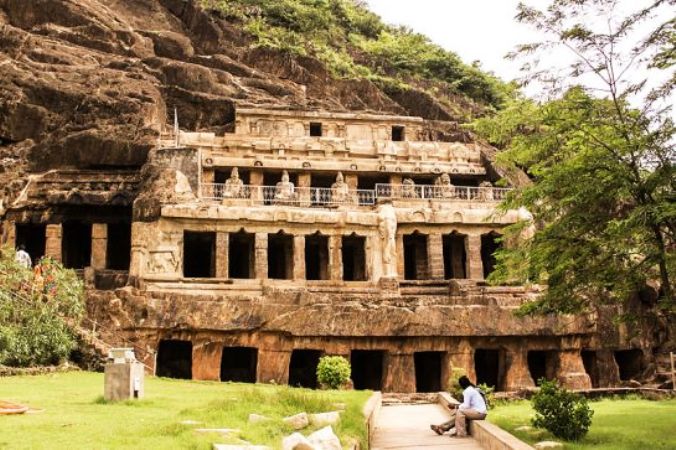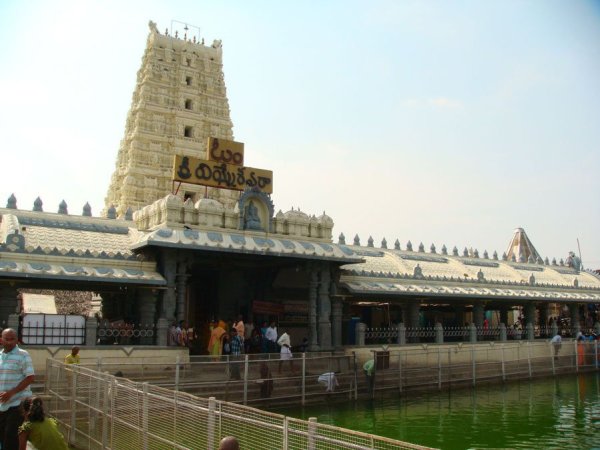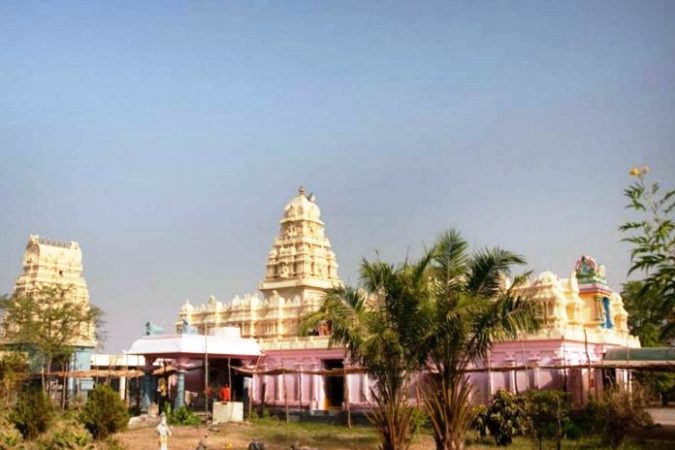
Kurmanathaswamy temple Srikurmam
About Kurmanathaswamy temple
Sri Kurmanadha Temple located in Sri Kurmam Village starts from the way back to 1st Century A.D. This temple is believed to be under the influence of Jagannatha Deva, king of Jagannatha Puri of Orissa before 1281 A.D. Later this temple was found to be reestablished by Sri Ramanujacharya during 1281 A.D. Again this ancient temple went to the control of Vijaya Nagara Dynasty after 1281 A.D. There are few inscriptions indicating that the main deity was worshiped by Vaishnavas of the Madhvacharya Sampradäya.
It is said that the temple was built and dedicated in the holy name of Yoganandha Narasimha, and the temple of Lord Yoganandha Narasimhan is found in the entrance of Sri Kurmanadha temple. And the improvement works of Sri Kurmanadha Temple is managed by the Simhachalam Devasthanam. The mythology was that during Krita Yuga or Satya Yuga (Era of Truth), all the devas and asuras churned the Kshirasagara, the ocean of milk using serpent Vasuki, and using Mandara parvatha as churning stick to obtain Amrutha.
The steps taken by devas to obtain nectar was ended up in vain. Then Lord Vishnu took the avatar of Kurma and lifted up the churning stick Mandara parvatha on His back to fulfill the desire of devas. And there are some more stories from epics which depicts the manifestation of Lord Vishnu as Kurma. The temple was believed to be renovated and reestablished by Sri Ramanujacharya, a Hindu theologian, philosopher, and scriptural exegete, under the authority of Jagannath temple, Puri. Sri Ramanujacharya is respected by the Vaishnavas as the most important Acharya, the teacher of Vaishnava tradition.
The two stones, one is bigger and the other is smaller on the small stone platform, represents the Body and head of the tortoise. The rear portion of this divine form is a large ammonite, with swirling circles on its face resembling the Sudarshana Chakra of Lord Vishnu.
The presiding deity of this temple is Lord Kurmanatha, the Kurma avatar of Lord Vishnu. Kurma refers to Tortoise, which is called as Sri Kurmam. The head of the presiding deity is found in the form of Kurma and it is represent by the sacred Vishnu Namam. The bottom or tail part is again represented in the form of Saligrama, which was said to be presented by Adi Sankaracharya, the philosopher and theologian, from India who consolidated the doctrine of Advaita Vedanta and he established the main current of thoughts in Hinduism.
Sri Kurmam Temple is considered to be the large Saligrama, a fossilized stone used to invoke God, which is used to represent god. The special feature about the temple is that the deity of the temple faces towards west direction. And hence the temple has Dhwajastambams (Flagpole) in both front and back side of the temple. The architectural excellence of the temple convey the skills of the artists who delivered such a magnificent architecture. The temple contains 210 pillar, where each pillars has individual identity. And the temple has a total of 127 inscriptions in four different languages.
By Road
Sri Kurmanadha Swamy Temple is well connected by road to all places in Andhra Pradesh and to other states of India.
By Train
The nearest Railway Station is Srikakulam station, which is about 20 km from Sri Kurmanadha Swamy Temple.
By Air
The nearest airport is Visakhapatnam Airport, which is about 120 km from Sri Kurmanadha Swamy Temple.
.......
1. Visakhapatnam-Beaches, Caves and Ports.
2. Tirupati-Tirupati Balaji, Hinduism.
3. Vijayawada-Caves, History, Nature.
4. Nellore-Religion, Rivers.
5. Chittoor-Temples, Agriculture, Nature.
6. Anantapur- Temples, History, Heritage.
Srikurmam is one of the rare Indian temples that follow both Shaivite and Vaishnavite traditions.Abhisheka is performed daily to the idol, and devotees are allowed to participate in person; this is a feature seen more often in Shaivite temples than in Vaishnavite temples. Akhanda Deeparadhana, Nitya Bhogam and Kalyanam are regularly performed to the deities. Devotees visit the Pathalasiddheswara temple before entering the sanctum sanctorum of Kurmanathaswamy.
Pooja Timings
The temple remains open from morning 4.30 AM to 11.00 AM and in the evening from 3.00 PM to 7.00 PM. Poojas offered are listed below:-
- Abhishekham
- Akhanda Deeparadhana
- Nitya Bhogum for Lord (Prasadam)
- Kalyanotsavam
Festivals
- Dolotsavam (Holi) – March
- Kalyanotsavam – April/May
- JanmaDinam Jayanthi – May/June
- Mukkoti Ekadasi (Vaikuntha Ekadashi) – December/January




















